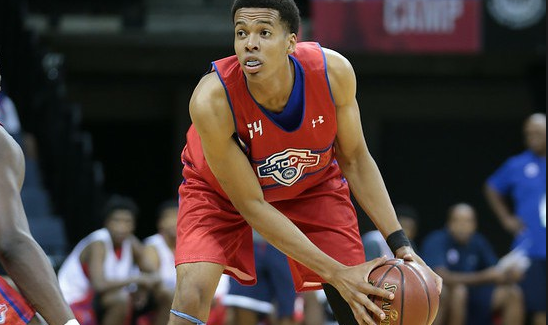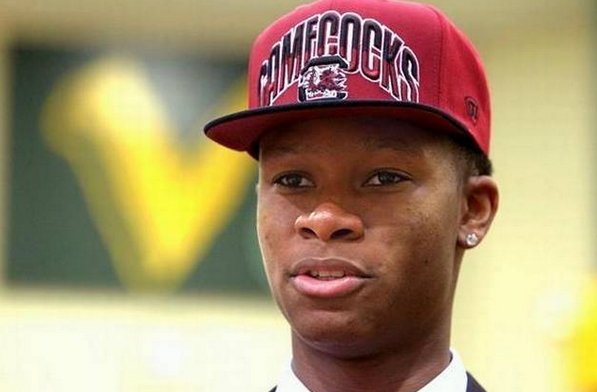SEC Impact Newcomers: Part I
Posted by Greg Mitchell on October 28th, 2015Any team’s collection of freshmen and incoming transfers provides for excitement at the start of a new season. It should be no shock that in a conference that John Calipari calls home, there is A LOT of that form of excitement this season, as the SEC is once again loaded with freshman talent. The one difference is that it’s not just Kentucky bringing in the SEC’s blue-chippers this year. Less heralded programs such as LSU, Mississippi State and South Carolina all feature potential NBA First Round picks in their new classes. And lets not forget about the impact transfers who will make SEC debuts this season, especially in light of a transfer leading the league in scoring last year (Auburn’s K.T. Harrell) and another finishing fourth (Ole Miss’ Stefan Moody). Today we’ll look at half of the league and and focus on a freshman or transfer player who should play a key role for each team this season:
Kentucky – Skal Labissiere. Selecting Labissiere here is a no-brainer. Calipari brings in another extraordinarily talented group of freshmen this season, but Labissiere, possibly the first overall pick in next year’s NBA Draft, is the clear headliner. The Haitian-born big man will undoubtedly draw comparisons to former Kentucky star Anthony Davis because he’s a lean, explosive and tall forward who really runs the floor. Comparing any player to Davis — potentially the best basketball player in the world right now — is setting an unrealistic expectation, but Labissiere’s ability to control the paint on both ends will be a key to Kentucky’s success this season. One thing big Skal has that Davis did not is an experienced point guard running the show in Tyler Ulis.

Now that Skal Labissiere’s eligibility status is cleared up, he can focus on leading a talented Kentucky team (Photo: collegebasketball.nbcsports.com).
Texas A&M – D.J. Hogg. The Aggies’ freshman bigs need to replace Kourtney Roberson’s steady play down low, but Hogg should help diversify the offense from the outside. Danuel House is one of the best wings in the country, but with the departure of three-point marksman Peyton Allen, A&M is thin on perimeter shot-makers. Alex Caruso has all-SEC potential, but he’s a distributor first and scorer second. Hogg comes in as a four-star prospect with the potential to be both a long-range threat and an athletic slasher. He won’t be pressured to shoulder a heavy early load, but could develop into another consistent source of offense on what looks like a deep team.
Vanderbilt – Nolan Cressler. Kevin Stallings’ team has a lot going for it this season. First and foremost is Damian Jones, a potential lottery pick at the center position. Less talked about but potentially as exciting is a loaded backcourt rotation. The only issue — if it’s an issue at all — is that Riley LaChance and Matthew Fisher-Davis are both primarily spot-up shooters. Cressler, a junior transfer, led Cornell in scoring two seasons ago at 16.8 points per game and should add a mid-range/slashing component to the perimeter rotation. Freshman Joe Toye may do the same.
Florida – John Egbunu. Florida’s defense (11th in efficiency) was not the reason the Gators fell well short of expectations last year. An inconsistent offense, however, was precisely why Billy Donovan’s last collegiate team limped to a disappointing 16-17 overall record. With that deficiency in mind, it would be a big boost if freshmen wings Keith Stone and KeVaughn Allen contributed offensively in Michael White’s inaugural year. But as crucial as those two youngsters will be, Egbunu should play an especially key role for this year’s Gators. The South Florida transfer will be the Gators’ primary low post-oriented big man. Two seasons ago as a freshman he finished among the top 10 in the AAC in both block percentage and total rebound percentage, flashing the kind of rim-protecting skills that should allow Dorian Finney-Smith and Devin Robinson more freedom to make plays from mismatches on the perimeter.
South Carolina – P.J. Dozier. For the second straight year, Frank Martin kept a local star at home in Columbia. Last year it was Keenan’s Marcus Stroman; this year it’s Spring Valley’s Dozier. Both were big recruiting wins but Martin’s newest addition could be the game changer he needs entering his fourth season at South Carolina. Dozier, a lanky wing with a substantial high school resume, will add to an already strong corps of Gamecock perimeter weapons. He will surely remove some of the scoring burden from guards Duane Notice and Sindarius Thornwell — the only Gamecocks to average double figures last season.

Keeping Columbia native P.J. Dozier at home was a big recruiting win for Frank Martin (Photo: thestate.com).
Georgia – Derek Ogbedie. The Bulldogs will continue to give teams fits this year, in no small part because Mark Fox will be rolling out one of the best backcourts in the conference. But as explosive as Kenny Gaines and Charles Mann are, they will need some help down low. Marcus Thornton and Nemanja Djurisic are gone, leaving sophomore Yante Maten as the lone returning big man with significant experience (and he only averaged 18.2 minutes per game). Atlanta-native Ogbedie gets the nod here because he’s the more heralded recruit, but both he and fellow freshman forward Mike Edwards will need to contribute right away for the Bulldogs to make the most of that talented backcourt.
Missouri – Terrence Phillips. Phillips comes to Columbia with a reputation as a pass-first point guard, so get ready to hear “floor general” and “leader” often used in praise about him. Whether he contributes as a scorer this season isn’t a great concern; Kim Anderson will be grateful if he can simply offer a steady hand in leading an offense that consistently struggled a year ago. It sounds like a lot to ask of a freshman, but Phillips has the pedigree after leading an Oak Hill team flush with D-I talent. He has the bloodlines, too: Phillips is the half-brother of Detroit Pistons point guard Brandon Jennings. There’s a good chance he could start from day one and become a four-year contributor for the Tigers. Mizzou has seen some great point guards pass through in recent years (Phil Pressey; Michael Dixon; Zaire Taylor), but you have to go back to Jason Horton (a vestige of the Quin Snyder era) to find one that spent a full four years in Columbia.










































